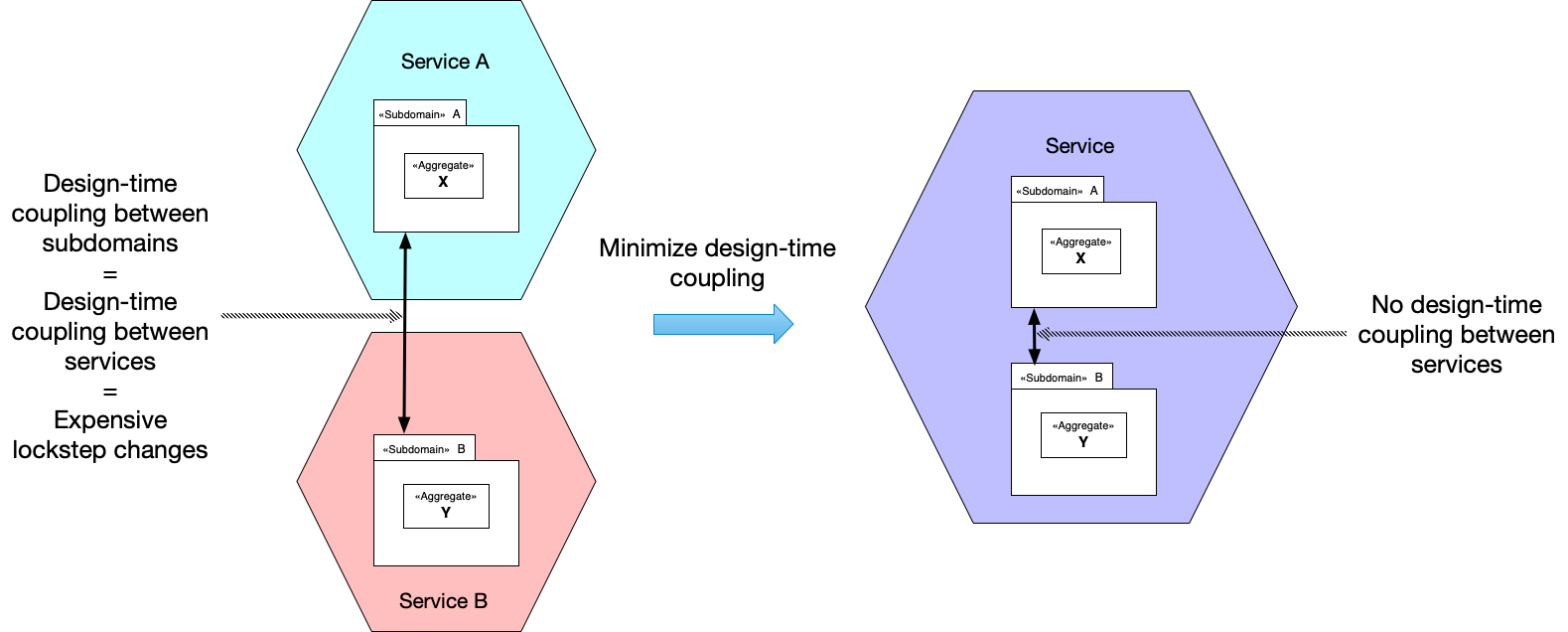Dark matter force: minimize design-time coupling
microservice architecture architecting dark energy and dark matter loose coupling design-time couplingContact me for information about consulting and training at your company.
The MEAP for Microservices Patterns 2nd edition is now available
a dark energy, dark matter force

When designing software it’s important to minimize design-time coupling between software elements, regardless of whether classes, packages, subdomains or services. The degree of design-time coupling between a pair of software elements is the likelihood that they need to change together for the same reason. Design-time coupling between services in a microservice architecture is especially problematic. Let’s look at why it’s a problem, how we can minimize it and why it’s an attractive force between subdomains.
Why is design-time coupling between services a problem?
If two services are loosely coupled, then a change to one service rarely requires a change to the other service. However, if two services are tightly coupled, then a change to one service often requires a change to the other service. These types of lockstep changes are expensive since it typically involves breaking API changes.
For example, let’s imagine that the Order Service and Customer Service are tightly coupled.
Each time a breaking changes needs to be made to the Customer Service the sequence of steps is as follows:
- Change the
Customer Serviceto add a new major version of its API. The service must implement both the old and new version of its APIs until all clients have been migrated over. - Migrate the
Order Serviceto the new API version - Remove the old API version from the
Customer Service
What’s even worse, is that quite often the services are owned by different teams, which requires those teams to coordinate the changes. In other words, design-time coupling between services undermines team autonomy.
How to minimize design-time coupling between services
There are a couple of different ways to minimize design-time coupling between services.
Design subdomains to be loosely coupled
The first is to design subdomains to be loosely coupled. Loosely coupled subdomains can be packaged as different services. Loose design-time coupling is usually achieved by each subdomain having a stable API that encapsulates its implementation.
In general, to reduce design-time coupling, software elements, such as subdomains and services, should expose the minimum amount of information to their clients. For example, I like to use the Iceberg metaphor to describe a software element. Similarly, John Ousterhout in his book A Philosophy of Software Design describes how modules should be deep rather than shallow.
Package tightly coupled subdomains together
The second way to minimize design-time coupling between services is to package subdomains that are tightly coupled in the same service. If two subdomains are tightly coupled, then packaging them together in the same service will avoid design-time coupling between services. As a result, design-time coupling acts as an attractive force between subdomains.


 Premium content now available for paid subscribers at
Premium content now available for paid subscribers at 




